-
 Bitcoin
Bitcoin $118900
0.42% -
 Ethereum
Ethereum $3710
-2.88% -
 XRP
XRP $3.513
-2.96% -
 Tether USDt
Tether USDt $1.000
-0.01% -
 Solana
Solana $203.0
3.65% -
 BNB
BNB $765.5
-1.29% -
 USDC
USDC $0.9998
0.00% -
 Dogecoin
Dogecoin $0.2671
-4.18% -
 Cardano
Cardano $0.8817
-3.63% -
 TRON
TRON $0.3139
-0.64% -
 Hyperliquid
Hyperliquid $44.34
-5.45% -
 Stellar
Stellar $0.4637
-4.08% -
 Sui
Sui $3.908
-2.59% -
 Chainlink
Chainlink $19.34
-2.62% -
 Hedera
Hedera $0.2712
-3.77% -
 Avalanche
Avalanche $24.97
-4.13% -
 Bitcoin Cash
Bitcoin Cash $519.8
-1.48% -
 Shiba Inu
Shiba Inu $0.00001518
-3.74% -
 Litecoin
Litecoin $115.6
-2.21% -
 Toncoin
Toncoin $3.460
3.68% -
 UNUS SED LEO
UNUS SED LEO $8.977
-0.07% -
 Polkadot
Polkadot $4.460
-2.96% -
 Uniswap
Uniswap $10.53
-5.43% -
 Ethena USDe
Ethena USDe $1.001
0.01% -
 Monero
Monero $323.6
-0.36% -
 Pepe
Pepe $0.00001379
-2.60% -
 Bitget Token
Bitget Token $4.772
-3.90% -
 Dai
Dai $0.9999
0.00% -
 Aave
Aave $307.5
-6.66% -
 Bittensor
Bittensor $441.8
0.84%
How do crypto miners get paid?
Crypto miners earn rewards through block subsidies and transaction fees, with payouts varying based on network demand, coin type, and mining pool participation.
Jul 13, 2025 at 05:49 am
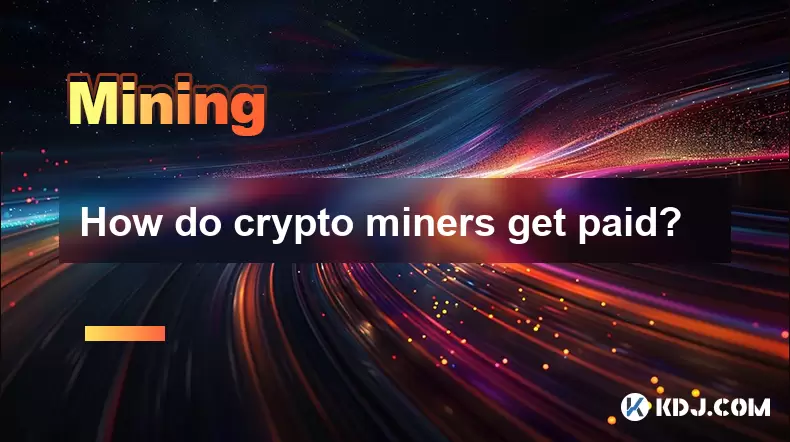
Understanding the Mechanism Behind Crypto Mining Rewards
Crypto miners get paid through a combination of block rewards and transaction fees, which are distributed when they successfully validate new blocks on the blockchain. Each time a miner solves a cryptographic puzzle and adds a new block to the chain, they receive a set number of newly minted coins as a reward. This process is fundamental to how most proof-of-work (PoW) cryptocurrencies operate.
The exact amount of compensation depends on several factors, including the specific cryptocurrency being mined, the current block subsidy, and the volume of transactions included in the block. For example, Bitcoin’s block reward halves approximately every four years, reducing the number of new Bitcoins awarded per block. This mechanism ensures scarcity and controls inflation within the network.
The Role of Block Rewards in Miner Compensation
Block rewards form the primary source of income for crypto miners, especially in the early stages of a blockchain’s lifecycle. When a miner successfully validates a new block, they are allowed to include a special type of transaction known as a coinbase transaction. This transaction creates new coins out of thin air and sends them directly to the miner’s wallet address.
For instance, as of 2024, Bitcoin miners receive 6.25 BTC per block, although this amount will halve again in 2028. Ethereum, on the other hand, transitioned from PoW to proof-of-stake (PoS) in 2022, so traditional mining no longer applies there. Other cryptocurrencies like Litecoin or Monero still rely on PoW, offering ongoing block rewards to miners.
Transaction Fees as a Secondary Source of Income
In addition to block rewards, miners also collect transaction fees from users who send funds across the network. These fees are not fixed and vary depending on network congestion and user preferences. When more people are using the blockchain, transaction fees tend to rise because users must pay higher fees to have their transactions prioritized by miners.
Miners typically select transactions with higher fees first, incentivizing users to offer more if they want faster confirmations. These fees can sometimes surpass the value of the block reward itself during periods of high demand. For example, during Bitcoin's peak usage times, miners may earn significant additional income from transaction fees alone.
Pool Mining and How It Affects Earnings Distribution
Individual miners often join mining pools to increase their chances of earning consistent rewards. Since mining is probabilistic and requires substantial computational power, solo miners might go weeks or even months without finding a block. Mining pools aggregate the hash power of multiple participants and distribute rewards proportionally based on each member’s contribution.
When a pool successfully mines a block, the rewards are split among members according to the number of shares they submitted during the mining round. Shares represent proof of work done by each miner. Some pools charge a small fee for their services, while others operate on a pay-per-share model to ensure predictable payouts.
How Miners Actually Receive Their Payments
Once a block is successfully mined, the miner or mining pool automatically generates a payout transaction that sends the earned coins to a designated wallet address. Most mining software allows users to specify a wallet address where all earnings will be deposited. It is crucial to use a secure and reliable wallet to store these funds and avoid potential losses due to theft or misconfiguration.
Some platforms offer automatic transfers once a certain threshold is reached, while others require manual withdrawals. Miners should configure their payout settings carefully to avoid unnecessary transaction fees or delays. Additionally, it’s important to monitor mining performance through dashboard tools provided by mining pools or software.
Frequently Asked Questions
Can I mine crypto without joining a pool?
Yes, it is possible to mine independently, but the probability of finding a block is much lower unless you have access to significant computing power.
Are transaction fees guaranteed for miners?
No, transaction fees are optional and depend on what users are willing to pay. During low-traffic periods, fees may be minimal or nonexistent.
What happens when all block rewards are distributed?
In many cryptocurrencies, block rewards eventually phase out entirely, leaving only transaction fees as the main incentive for miners to continue securing the network.
Do mining pools take a cut of the rewards?
Most mining pools deduct a small percentage as a service fee, though some offer zero-fee models with alternative revenue sources. Disclaimer:info@kdj.com
The information provided is not trading advice. kdj.com does not assume any responsibility for any investments made based on the information provided in this article. Cryptocurrencies are highly volatile and it is highly recommended that you invest with caution after thorough research!
If you believe that the content used on this website infringes your copyright, please contact us immediately (info@kdj.com) and we will delete it promptly.
- Dianne Smith, a Spanish Doubloon, and JM Mason: A Pike County Tale
- 2025-07-23 08:30:13
- MoonBull vs. Turbo: Who Wins the Crypto Meme Coin Race in 2025?
- 2025-07-23 08:30:13
- PNC Bank & Coinbase: Banking on Crypto's Future, NYC Style
- 2025-07-23 06:30:12
- Ruvi AI: The Next Avalanche Riding the AI and Blockchain Wave?
- 2025-07-23 06:30:12
- Bullish Cryptos: BlockDAG Leads the Charge, Aptos Integrates WBTC, and More!
- 2025-07-23 07:10:14
- Crypto Coins Under $1 to Watch: BlockDAG, Stellar, Cronos, and Sei
- 2025-07-23 07:10:14
Related knowledge
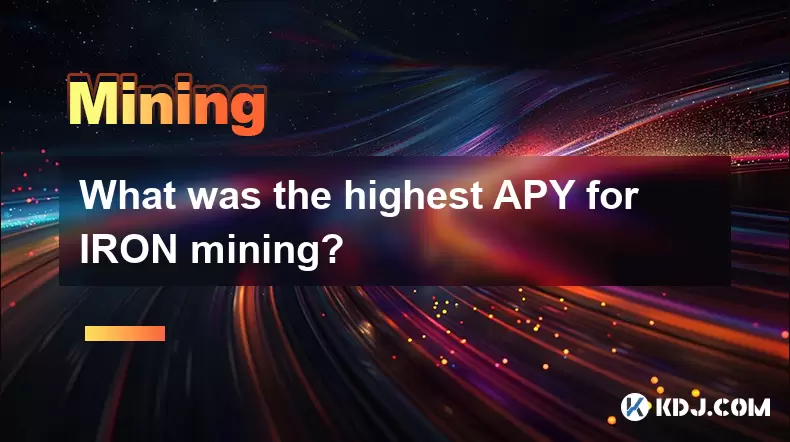
What was the highest APY for IRON mining?
Jul 23,2025 at 05:14am
Understanding IRON Token and Its Mining MechanismThe IRON token is a stablecoin that operates within the Iron Finance ecosystem, primarily on blockcha...

What is impermanent loss in IRON pools?
Jul 23,2025 at 09:00am
Understanding Impermanent Loss in the Context of IRON PoolsImpermanent loss is a phenomenon that affects liquidity providers in decentralized finance ...

How to join a Kaspa mining pool?
Jul 23,2025 at 08:36am
Understanding Kaspa and Its Mining MechanismKaspa is a high-performance blockchain that utilizes a unique blockDAG (Directed Acyclic Graph) structure,...
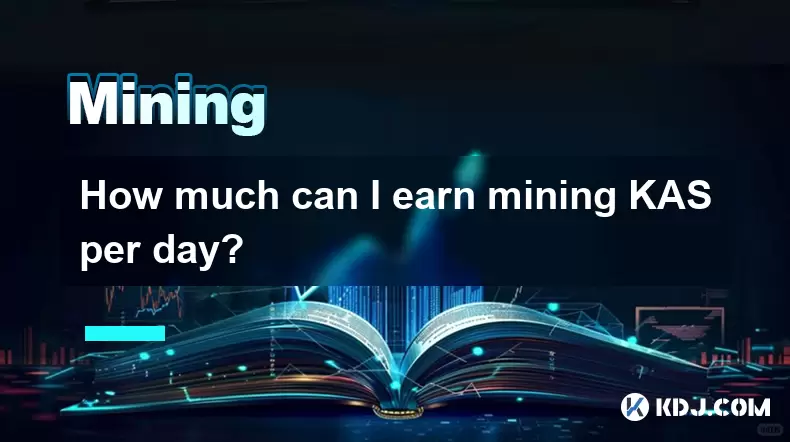
How much can I earn mining KAS per day?
Jul 23,2025 at 04:21am
Understanding KAS Mining and Its Earnings PotentialMining KAS (Kaspa) involves using computational power to solve cryptographic puzzles and validate t...
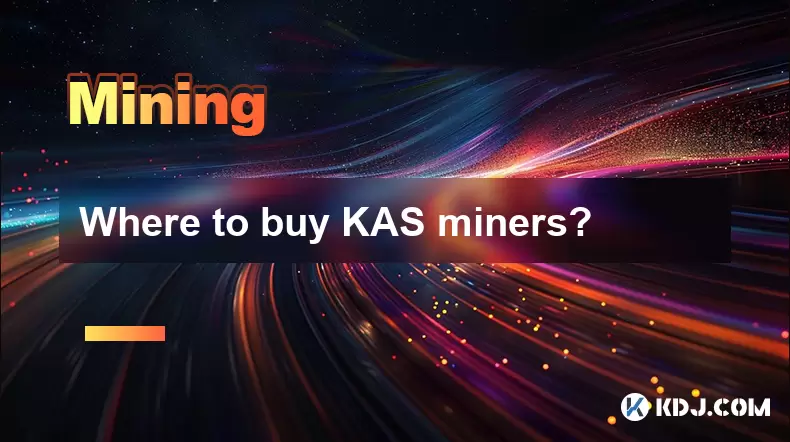
Where to buy KAS miners?
Jul 23,2025 at 05:28am
Understanding KAS Miners and Their Role in the KASPA EcosystemKAS miners are specialized hardware or software tools designed to mine KASPA (KAS), a cr...
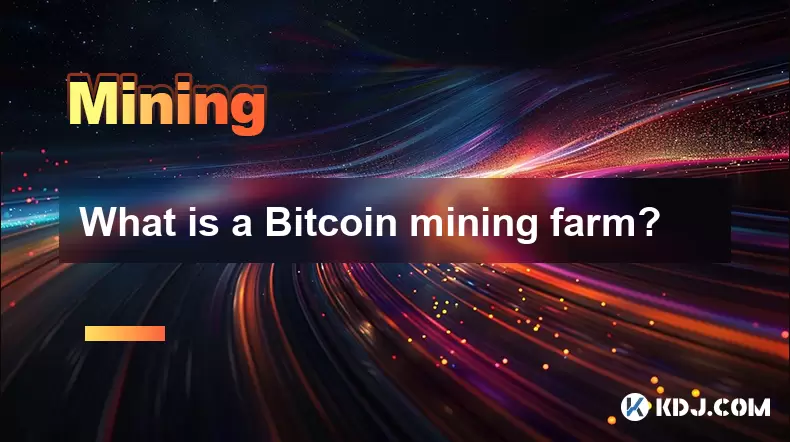
What is a Bitcoin mining farm?
Jul 23,2025 at 06:22am
What Defines a Bitcoin Mining Farm?A Bitcoin mining farm is a large-scale operation dedicated to processing Bitcoin transactions and securing the bloc...

What was the highest APY for IRON mining?
Jul 23,2025 at 05:14am
Understanding IRON Token and Its Mining MechanismThe IRON token is a stablecoin that operates within the Iron Finance ecosystem, primarily on blockcha...

What is impermanent loss in IRON pools?
Jul 23,2025 at 09:00am
Understanding Impermanent Loss in the Context of IRON PoolsImpermanent loss is a phenomenon that affects liquidity providers in decentralized finance ...

How to join a Kaspa mining pool?
Jul 23,2025 at 08:36am
Understanding Kaspa and Its Mining MechanismKaspa is a high-performance blockchain that utilizes a unique blockDAG (Directed Acyclic Graph) structure,...

How much can I earn mining KAS per day?
Jul 23,2025 at 04:21am
Understanding KAS Mining and Its Earnings PotentialMining KAS (Kaspa) involves using computational power to solve cryptographic puzzles and validate t...

Where to buy KAS miners?
Jul 23,2025 at 05:28am
Understanding KAS Miners and Their Role in the KASPA EcosystemKAS miners are specialized hardware or software tools designed to mine KASPA (KAS), a cr...

What is a Bitcoin mining farm?
Jul 23,2025 at 06:22am
What Defines a Bitcoin Mining Farm?A Bitcoin mining farm is a large-scale operation dedicated to processing Bitcoin transactions and securing the bloc...
See all articles

























































































